. At the end of this lecture you

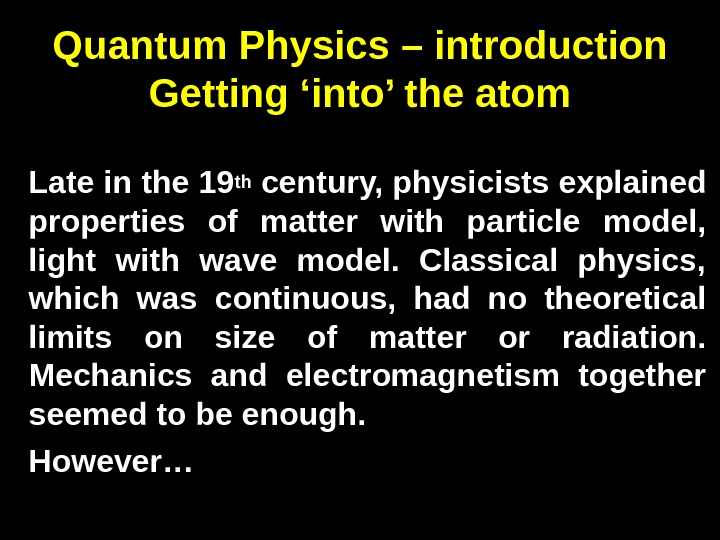
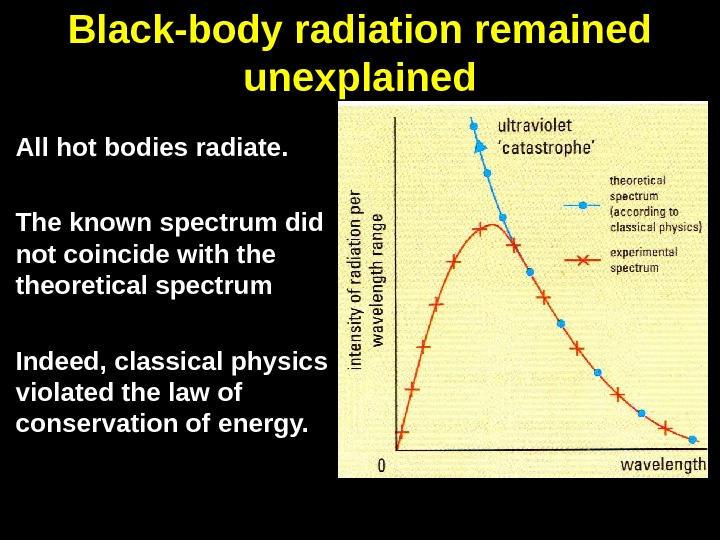
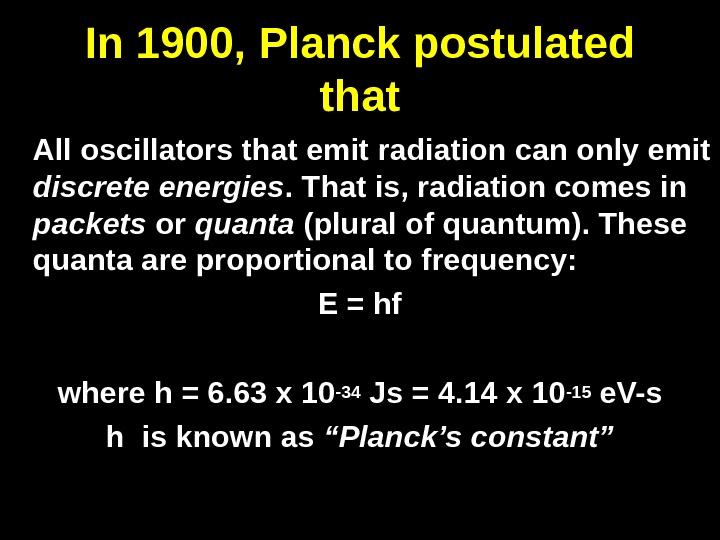
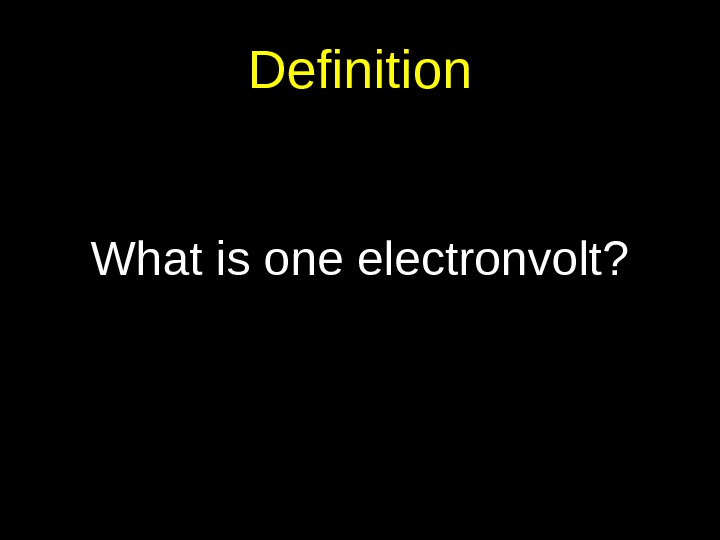
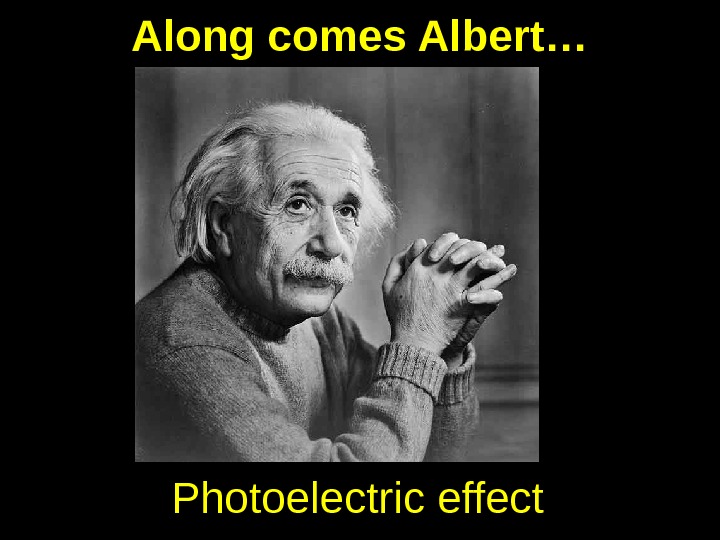
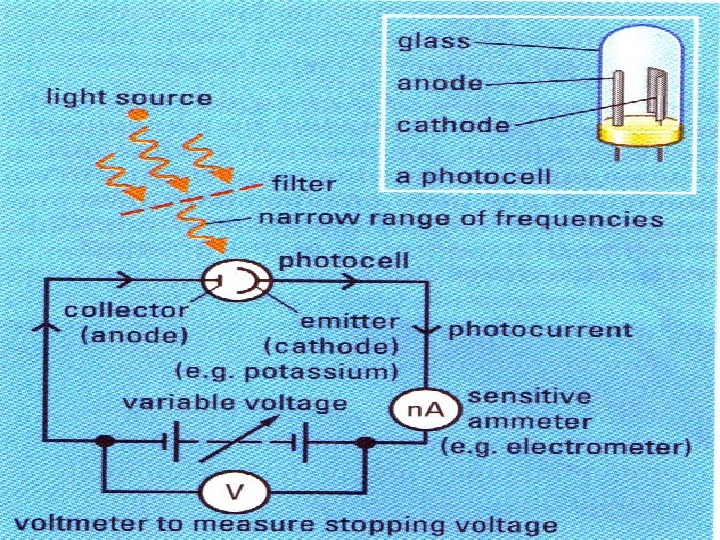
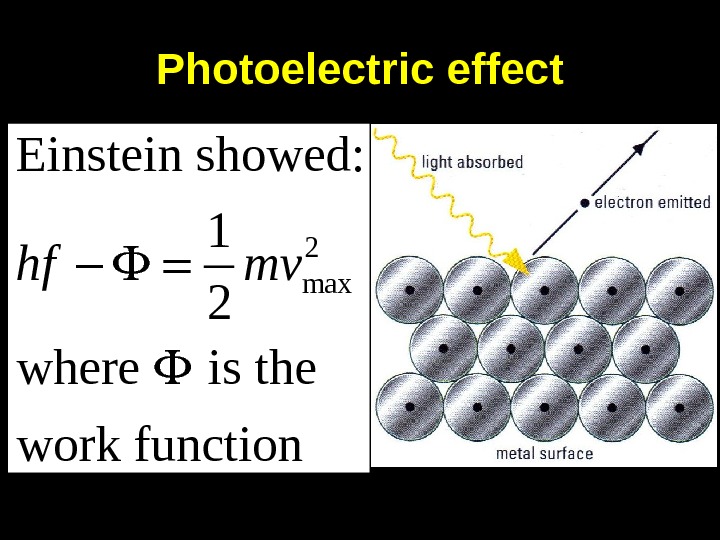
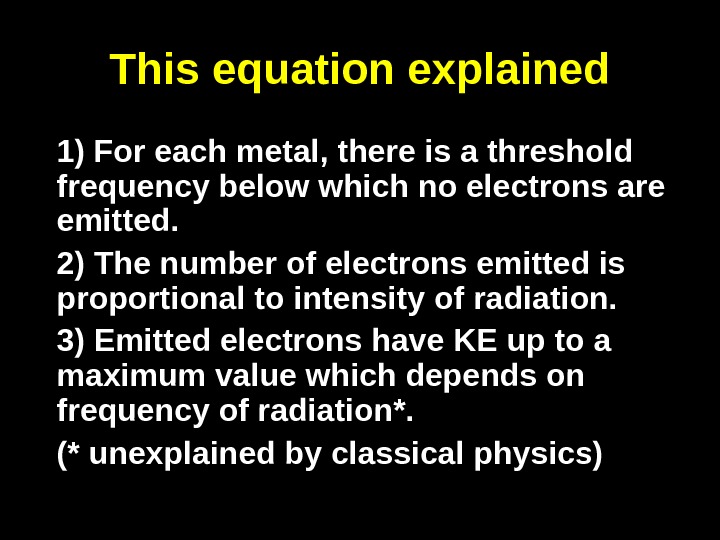
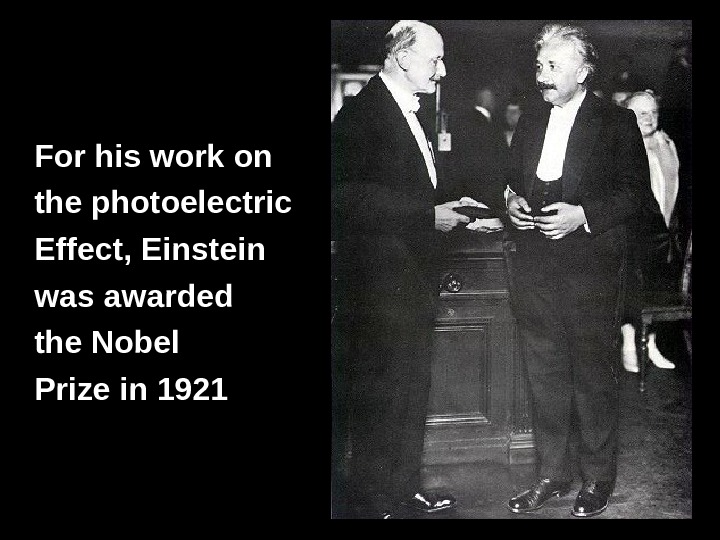

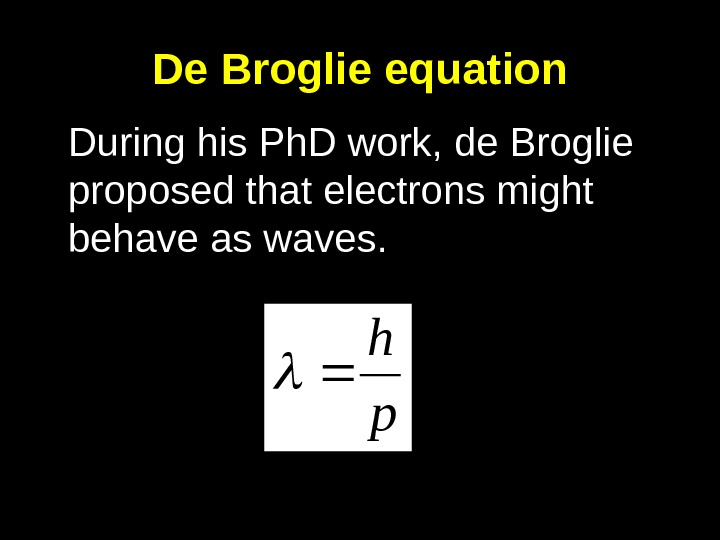


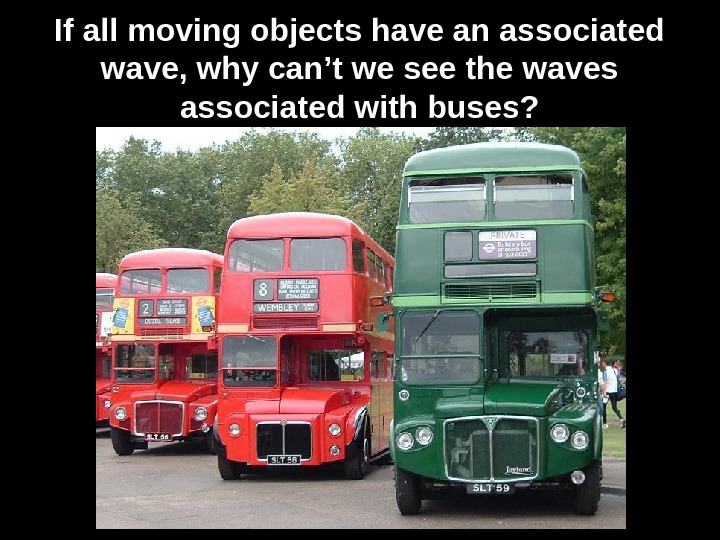



- Размер: 1.5 Mегабайта
- Количество слайдов: 18
Описание презентации . At the end of this lecture you по слайдам
 . At the end of this lecture you should: • Have a qualitative understanding of the difference between quantum mechanics (QM) and classical physics and have an acquaintance with the origins of QM • Understand the principles behind the photoelectric effect and be able to perform calculations which demonstrate your understanding • Know what is meant by Planck’s constant, quantum, photon, work function, threshold frequency, stopping potential, electron volt • Have a qualitative understanding of electron diffraction and the ideas behind Heisenberg’s Uncertainty Principle • Know about wave-particle duality and the De Broglie equation which quantifies this Quantum Mechanics
. At the end of this lecture you should: • Have a qualitative understanding of the difference between quantum mechanics (QM) and classical physics and have an acquaintance with the origins of QM • Understand the principles behind the photoelectric effect and be able to perform calculations which demonstrate your understanding • Know what is meant by Planck’s constant, quantum, photon, work function, threshold frequency, stopping potential, electron volt • Have a qualitative understanding of electron diffraction and the ideas behind Heisenberg’s Uncertainty Principle • Know about wave-particle duality and the De Broglie equation which quantifies this Quantum Mechanics
 Quantum Physics – introduction Getting ‘into’ the atom Late in the 19 th century, physicists explained properties of matter with particle model, light with wave model. Classical physics, which was continuous, had no theoretical limits on size of matter or radiation. Mechanics and electromagnetism together seemed to be enough. However…
Quantum Physics – introduction Getting ‘into’ the atom Late in the 19 th century, physicists explained properties of matter with particle model, light with wave model. Classical physics, which was continuous, had no theoretical limits on size of matter or radiation. Mechanics and electromagnetism together seemed to be enough. However…
 Black-body radiation remained unexplained All hot bodies radiate. The known spectrum did not coincide with theoretical spectrum Indeed, classical physics violated the law of conservation of energy.
Black-body radiation remained unexplained All hot bodies radiate. The known spectrum did not coincide with theoretical spectrum Indeed, classical physics violated the law of conservation of energy.
 In 1900, Planck postulated that All oscillators that emit radiation can only emit discrete energies. That is, radiation comes in packets or quanta (plural of quantum). These quanta are proportional to frequency: E = hf where h = 6. 63 x 10 -34 Js = 4. 14 x 10 -15 e. V-s h is known as “Planck’s constant”
In 1900, Planck postulated that All oscillators that emit radiation can only emit discrete energies. That is, radiation comes in packets or quanta (plural of quantum). These quanta are proportional to frequency: E = hf where h = 6. 63 x 10 -34 Js = 4. 14 x 10 -15 e. V-s h is known as “Planck’s constant”
 Definition What is one electronvolt?
Definition What is one electronvolt?
 Along comes Albert… Photoelectric effect
Along comes Albert… Photoelectric effect

 Photoelectric effect 2 max. Einstein showed: 1 2 where is the work functionhf mv
Photoelectric effect 2 max. Einstein showed: 1 2 where is the work functionhf mv
 This equation explained 1) For each metal, there is a threshold frequency below which no electrons are emitted. 2) The number of electrons emitted is proportional to intensity of radiation. 3) Emitted electrons have KE up to a maximum value which depends on frequency of radiation*. (* unexplained by classical physics)
This equation explained 1) For each metal, there is a threshold frequency below which no electrons are emitted. 2) The number of electrons emitted is proportional to intensity of radiation. 3) Emitted electrons have KE up to a maximum value which depends on frequency of radiation*. (* unexplained by classical physics)
 For his work on the photoelectric Effect, Einstein was awarded the Nobel Prize in
For his work on the photoelectric Effect, Einstein was awarded the Nobel Prize in
 Example 1 a) Find the longest wavelength beyond which no electrons are emitted from a caesium surface if Φ caesium = 1. 80 e. V. b) If the surface is illuminated with monochromatic light of wavelength λ = 450 nm, calculate KE max of emitted photoelectrons. c) What is the stopping potential which just prevents photoemission in this situation?
Example 1 a) Find the longest wavelength beyond which no electrons are emitted from a caesium surface if Φ caesium = 1. 80 e. V. b) If the surface is illuminated with monochromatic light of wavelength λ = 450 nm, calculate KE max of emitted photoelectrons. c) What is the stopping potential which just prevents photoemission in this situation?
 De Broglie equation During his Ph. D work, de Broglie proposed that electrons might behave as waves. ph
De Broglie equation During his Ph. D work, de Broglie proposed that electrons might behave as waves. ph
 Electron diffraction Using de Broglie equation for electrons accelerated through 1 k. V gives a wavelength of about _ 0. 0388 nm _. This is comparable to the wavelength of X-Rays. Why are electrons easier to use than X-Rays when studying crystalline structures?
Electron diffraction Using de Broglie equation for electrons accelerated through 1 k. V gives a wavelength of about _ 0. 0388 nm _. This is comparable to the wavelength of X-Rays. Why are electrons easier to use than X-Rays when studying crystalline structures?
 Diffraction patterns due to X-Ray and Electrons passing through aluminium foil X-ray Electrons
Diffraction patterns due to X-Ray and Electrons passing through aluminium foil X-ray Electrons
 If all moving objects have an associated wave, why can’t we see the waves associated with buses?
If all moving objects have an associated wave, why can’t we see the waves associated with buses?
 Wave-particle duality Sometimes light behaves like a wave, sometimes light behaves like a particle. Wave-particle duality exists in the universe! How accurately physical properties can be measured is limited.
Wave-particle duality Sometimes light behaves like a wave, sometimes light behaves like a particle. Wave-particle duality exists in the universe! How accurately physical properties can be measured is limited.
 Heisenberg’s uncertainty principle 4 h px
Heisenberg’s uncertainty principle 4 h px
 CHECK LIST READING Adams and Allday: 8. 4, 8. 5, 8. 6, 8. 7. • At the end of this lecture you should • Have a qualitative understanding of the difference between quantum mechanics (QM) and classical physics and have an acquaintance with the origins of QM • Understand the principles behind the photoelectric effect and be able to perform calculations which demonstrate your understanding • Know what is meant by Planck’s constant, quantum, photon, work function, threshold frequency, stopping potential, electron volt • Have a qualitative understanding of electron diffraction and the ideas behind Heisenberg’s Uncertainty Principle • Know about wave-particle duality and the De Broglie equation which quantifies this
CHECK LIST READING Adams and Allday: 8. 4, 8. 5, 8. 6, 8. 7. • At the end of this lecture you should • Have a qualitative understanding of the difference between quantum mechanics (QM) and classical physics and have an acquaintance with the origins of QM • Understand the principles behind the photoelectric effect and be able to perform calculations which demonstrate your understanding • Know what is meant by Planck’s constant, quantum, photon, work function, threshold frequency, stopping potential, electron volt • Have a qualitative understanding of electron diffraction and the ideas behind Heisenberg’s Uncertainty Principle • Know about wave-particle duality and the De Broglie equation which quantifies this
